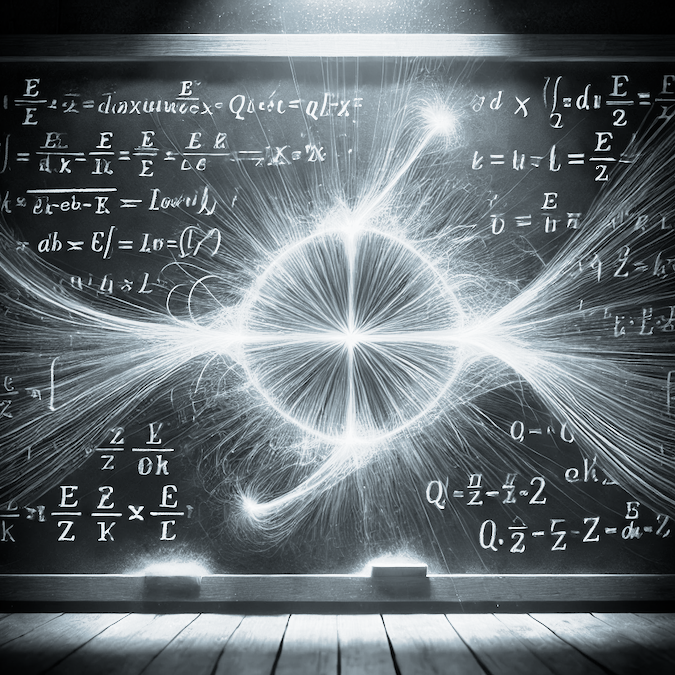
Maxwell's Equations: The Cornerstone of Electromagnetic Theory
James Clerk Maxwell’s equations stand as one of the most remarkable achievements in the history of physics. In the mid-19th century, Maxwell unified the seemingly distinct forces of electricity and magnetism into a single framework, establishing the foundation of what we now call electromagnetic theory. These equations not only explained the behavior of electric and magnetic fields but also unveiled the true nature of light itself.
The Four Pillars of Electromagnetic Theory
Maxwell’s equations in their differential form are concise yet immensely powerful. Each equation represents a fundamental principle of electromagnetism:
1. Gauss’s Law for Electric Fields
This law describes how electric charges produce electric fields. The net electric flux through a closed surface is proportional to the charge enclosed within the surface.
$$ \nabla \cdot \mathbf{E} = \frac{\rho}{\varepsilon_0} \tag{1} $$
- Key takeaway: Electric fields originate from electric charges.
2. Gauss’s Law for Magnetic Fields
Unlike electric fields, magnetic fields do not have isolated sources (magnetic monopoles). Instead, magnetic field lines always form closed loops.
$$ \nabla \cdot \mathbf{B} = 0 \tag{2} $$
- Key takeaway: There are no magnetic monopoles; magnetic fields are always dipolar in nature.
3. Faraday’s Law of Induction
A changing magnetic field induces an electric field. This principle forms the basis of electric generators and transformers.
$$ \nabla \times \mathbf{E} = -\frac{\partial \mathbf{B}}{\partial t} \tag{3} $$
- Key takeaway: Time-varying magnetic fields produce electric fields.
4. Ampère’s Law with Maxwell’s Correction
Electric currents and changing electric fields produce magnetic fields. Maxwell’s addition of the displacement current term, $$\mu_0 \varepsilon_0 \frac{\partial \mathbf{E}}{\partial t}$$, resolved inconsistencies in earlier formulations of this law.
$$ \nabla \times \mathbf{B} = \mu_0 \mathbf{J} + \mu_0 \varepsilon_0 \frac{\partial \mathbf{E}}{\partial t} \tag{4} $$
- Key takeaway: Magnetic fields are generated by both electric currents and changing electric fields.
Maxwell’s Insight: The Displacement Current
Maxwell’s introduction of the displacement current was a pivotal moment in physics. This term not only resolved inconsistencies in Ampère’s Law but also demonstrated the deep symmetry between electric and magnetic fields. It led directly to the prediction of electromagnetic waves—oscillating electric and magnetic fields that propagate through space.
Electromagnetic Waves and the Speed of Light
From Maxwell’s equations, it was possible to derive the wave equation for electric and magnetic fields. These waves travel at a speed determined by the permittivity ($\varepsilon_0$) and permeability ($\mu_0$) of free space:
$$ c = \frac{1}{\sqrt{\mu_0 \varepsilon_0}} \tag{5} $$
Remarkably, this speed matched the measured speed of light, leading Maxwell to conclude that light itself is an electromagnetic wave. This insight unified the fields of optics, electricity, and magnetism.
The Wave Equation
Electromagnetic waves obey the following wave equation, which describes their propagation:
$$ \nabla^2 \mathbf{E} = \frac{1}{c^2} \frac{\partial^2 \mathbf{E}}{\partial t^2} \tag{6} $$
This equation captures the essence of how electric and magnetic fields interact dynamically to sustain wave propagation through space.
Applications of Maxwell’s Equations
The impact of Maxwell’s work is vast, underpinning much of modern technology. Some notable applications include:
- Wireless communication: Radio waves, WiFi, and cellular networks rely on the principles of electromagnetic wave propagation.
- Microwave and RF engineering: Radar systems, satellite communication, and antenna design are rooted in Maxwell’s framework.
- Electromagnetic compatibility: Signal integrity and power integrity in circuit design are governed by these equations.
- Power systems: Transformers and electric power distribution depend on Faraday’s and Ampère’s laws.
- Medical imaging: Techniques like MRI operate using principles derived from Maxwell’s equations.
A Legacy of Elegance and Utility
Maxwell’s equations are a triumph of both mathematics and physics. They provide a unified framework that describes all classical electromagnetic phenomena using just four equations. Their elegance lies in their ability to encapsulate complex physical concepts in a concise and consistent manner.
Beyond their theoretical beauty, Maxwell’s equations have profoundly influenced technological advancements, from the development of modern electronics to the exploration of space. They continue to guide engineers, scientists, and researchers in solving real-world problems.
Conclusion
James Clerk Maxwell’s unification of electricity and magnetism reshaped our understanding of the physical universe. His equations not only explained natural phenomena but also revealed the electromagnetic nature of light, laying the groundwork for quantum mechanics and relativity.
To this day, Maxwell’s equations remain an indispensable tool in science and engineering, a testament to the power of human ingenuity to uncover the deep laws of nature.


